When someone struggles to organize their thoughts or connect ideas clearly, the result is more than momentary confusion. A thought disorder disrupts how ideas flow and link together, making it hard to communicate effectively or follow a conversation from start to finish.
Research shows that disorganized speech, the observable marker clinicians rely on, often reflects deeper structural problems in how thoughts are formed and expressed.
This article breaks down what thought disorders are, the symptoms and types you might encounter, how they differ across conditions, and how modern assessments and treatments work in real life.
What is a Thought Disorder?
A thought disorder, formally called formal thought disorder or FTD, describes disruptions in the structure or form of thinking as reflected through speech. Clinicians cannot directly observe thoughts, so they infer problems by listening to how someone talks. The DSM shifted terminology from “thought disorder” to “disorganized speech” to emphasize this observable, speech-based assessment.
Importantly, thought disorder refers to the form of thinking, not the content. Delusions and hallucinations involve abnormal thought content, while thought disorder captures how ideas are organized, connected, and expressed.
Someone with a thought disorder might jump between topics without clear transitions, add excessive subordinate clauses that obscure the main point, or speak in ways that sound disconnected or nonsensical. These patterns differ from simply forgetting a word or losing a train of thought occasionally.
Thought disorder has long been central to diagnosing schizophrenia and related psychotic conditions, but it also appears in other mental health and neurological conditions. Modern psychometric work identifies three core dimensions of speech disturbance: impaired expressivity, inefficiency, and incoherence. This three-factor model fits better across diagnostic groups than older two-factor schemas and helps clinicians distinguish subtle patterns.
Types of Thought Disorders
Researchers and clinicians identify different types of thought disorder based on how speech and language break down. Recent evidence supports organizing these types into three broad categories.
Impaired Expressivity
Impaired expressivity involves reduced speech output and expressiveness. Poverty of speech, where someone says very little, and increased response latency, where long pauses occur before answering, fall into this category. Decreased vocal inflection, where the voice sounds flat or monotone, also belongs here. These features suggest difficulty initiating or sustaining verbal expression rather than producing confusing content.
Inefficiency
Inefficiency captures speech that is poorly organized, redundant, or excessive without advancing the point. Tangentiality occurs when someone veers off topic and does not return. Circumstantiality involves providing excessive, unnecessary detail before reaching the point.
Derailment describes shifting between topics without logical transitions, and loss of goal means the speaker starts talking toward a purpose but never reaches it. Pressured speech, where words come rapidly and are hard to interrupt, and distractible speech, where external stimuli constantly pull attention away, also reflect inefficiency.
Automated speech analysis reveals that thought disorder relates to greater use of subordinated clauses layering tangential information and decreased semantic distance between sentences, producing the impression that speech circles without progressing.
Incoherence
Incoherence refers to speech that becomes unintelligible or nonsensical. Incoherent utterances lack clear meaning even when grammar appears intact. Illogicality involves conclusions that do not follow from premises. Neologisms are made-up words without shared meaning. Perseverations repeat the same word or idea despite context changes. These features signal breakdown at the level of meaning and logical connection.
The three-factor structure fits data better than older impoverished versus disorganized models, and it aligns with neurobiological evidence showing that different speech disturbances map onto distinct brain networks.
Thought Disorder Symptoms
Symptoms of thought disorder appear through observable speech patterns and can vary in severity and combination.
Common symptoms include:
- Loose associations: Ideas connect in ways that feel random or only loosely related, making it hard for listeners to follow.
- Tangents and derailment: The speaker drifts from the original topic without returning or acknowledging the shift.
- Poverty of content: Speech may be grammatically correct and even lengthy, but it conveys little meaningful information.
- Circumstantiality: Excessive, irrelevant details delay or obscure the main point.
- Incoherence: Sentences or phrases become unintelligible, lacking clear meaning.
- Neologisms: Invented words appear, often without explanation.
- Pressured speech: Rapid, difficult-to-interrupt speech that feels driven or urgent.
- Poverty of speech: Very few words or very short responses, even when longer answers are appropriate.
- Blocking: Sudden stops mid-sentence, as if the thought disappeared.
Clinicians rate these symptoms using structured scales like the Thought, Language, and Communication (TLC) scale. Modern rating protocols exclude low-prevalence or low-reliability items such as clanging or echolalia and focus on features with excellent interrater reliability, ensuring consistent measurement across settings.
Some symptoms overlap between categories. For example, derailment and loss of goal can reflect both inefficiency and emerging incoherence. Poverty of content sometimes straddles impaired expressivity and inefficiency. These ambiguities highlight why factor analysis and structured assessment matter.
How Thought Disorders Impact Daily Life?
Thought disorders create tangible challenges in communication, education, work, and relationships. These impacts go beyond diagnostic criteria and directly shape quality of life.
Communication
Conversations require establishing a topic, introducing people and objects clearly, connecting ideas with appropriate transitions, and progressing toward a shared understanding. Disorganized thinking disrupts each step. Increased subordinate clauses layer side information that obscures the main message and taxes listener memory.
Inefficient entity referencing leaves pronouns like “he,” “it,” or “they” ambiguous, causing confusion about who or what is being discussed. Reduced semantic distance means sentences repeat similar ideas without advancing, frustrating listeners and stalling problem-solving. These breakdowns affect interactions with family, friends, clinicians, and coworkers, often leading others to misinterpret difficulty as lack of interest or effort.
Education
Classrooms demand concise, goal-directed responses and sustained attention. Students with thought disorder may struggle to answer questions directly, provide overly tangential contributions, or produce written work that wanders without clear thesis statements.
Picture description tasks and oral presentations expose difficulties with coherence and entity tracking. Grading systems that emphasize participation and extemporaneous speaking can unfairly penalize students whose speech reflects symptom burden rather than knowledge gaps.

Work and Daily Functioning
Work settings require following multistep instructions, updating status clearly, and collaborating through concise exchanges. Disorganized speech impairs each function. Misunderstandings about tasks, priorities, or roles accumulate, leading to performance concerns.
Reduced speech complexity, associated with negative symptoms, can be misread as apathy. Without accommodations such as written confirmations of verbal instructions, checklists with explicit entities, and shorter check-ins, employment and independent functioning become harder to sustain.
Diagnosis and Assessment
Diagnosing a thought disorder involves multiple steps and cannot rely on speech alone.
Clinical Interview
Structured diagnostic interviews like the SCID-5 form the foundation. Clinicians observe speech during the interview and rate severity using symptom scales such as the PANSS (Positive and Negative Syndrome Scale) or specialized tools like the TLC, Thought and Language Index (TLI), or Thought and Language Disorder (TALD) scale. The TALD captures both objectively observable features and subjectively experienced disturbances, offering a fuller picture.
Elicitation Tasks
Standardized tasks improve reliability and comparability. The Cookie Theft picture description task, part of the Boston Diagnostic Aphasia Examination, is widely used because it provides a consistent visual prompt and is sensitive to pragmatic impairments.
Proverb interpretation tasks probe abstract thinking and can reveal bizarre or overly literal responses that suggest more severe formal thought disorder. Open narratives capture naturalistic speech patterns, including inefficiency and coherence over time.
Baseline Considerations
In populations with atypical baseline language, such as individuals with autism spectrum disorder, clinicians must judge disorganized speech relative to the person’s usual communication style.
Clinical guidelines emphasize that delusions and hallucinations carry more diagnostic weight for schizophrenia in these cases, while restricted and repetitive behaviors support an autism diagnosis. This baseline-relative approach prevents overinterpreting stable atypical language as emergent thought disorder.
Automated Speech Analysis
New computational methods analyze audio recordings to extract acoustic, linguistic, and semantic features. Convolutional neural networks applied to 10-second spectrograms achieve out-of-sample classification accuracy above 75% for distinguishing schizophrenia spectrum conditions from controls and detecting negative symptom severity.
These tools complement clinical ratings but require rigorous external validation, transparency in how models make decisions, and ongoing recalibration as populations and practices change over time.
Related Conditions
Thought disorder appears across multiple diagnostic categories, not exclusively in schizophrenia.
Schizophrenia Spectrum Disorders
Formal thought disorder is a core feature of schizophrenia and schizoaffective disorder. Severity correlates with functional impairment, negative symptoms, and lower social functioning. Bizarre responses on proverb tasks are relatively specific to schizophrenia spectrum conditions, with specificity around 87%.
Autism Spectrum Disorder
Autistic individuals can exhibit unusual, stereotyped, or idiosyncratic language that resembles formal thought disorder but reflects baseline communication style rather than psychosis. However, a subgroup of inpatient autistic individuals shows formal thought disorder alongside disorganized behavior, paranoid ideas, and hallucinations, suggesting vulnerability to comorbid psychosis.
Mood Disorders
Mania commonly features pressured speech, flight of ideas, and distractibility, reflecting inefficiency rather than severe incoherence. Major depression can involve poverty of speech or poverty of content. These patterns can be episodic and mood-congruent, helping differentiate them from primary psychotic disorders.

Neurocognitive Disorders
Alzheimer’s dementia produces pragmatic impairments on structured tasks like Cookie Theft, including topic maintenance failures and referencing issues. These reflect progressive cognitive and executive decline rather than psychotic disorganization.
Transdiagnostic Findings
Recent model-based clustering identifies four FTD profiles across schizophrenia, major depression, and bipolar disorder: minimal, poverty, inhibition, and severe. These clusters differ in cognitive profiles and associate with gray matter volume and cortical surface features, supporting the idea that some thought disorder dimensions traverse diagnostic boundaries.
Treatment and Support
Addressing thought disorder involves interventions targeting cognitive capacities, metacognitive awareness, and communication strategies.
Cognitive Remediation Therapy
Cognitive remediation therapy (CRT) is a behaviorally based training approach that targets cognitive capacities such as working memory, attention, and executive function through drill, practice, and strategy use.
Meta-analytic evidence shows moderate gains in cognition and functioning, with effect sizes around 0.5 for cognition and 0.42 for real-world functioning. CRT’s strategy components can be adapted to address communication demands like planning, sequencing, and clarity, making it relevant for disorganization’s daily impacts.
Metacognitive Training and Therapy
Metacognitive training (MCT) aims to improve awareness of cognitive and affective biases underlying delusions and other symptoms. Evidence is mixed. One trial in early psychosis found MCT did not outperform occupational therapy for reducing delusions or cognitive biases, and disorganization outcomes were not assessed.
A forensic case report found MCT feasible and acceptable for chronic paranoid schizophrenia with depressive symptoms, with reductions in rumination and metacognitive beliefs. MCT shows promise as an adjunct but requires further research targeting disorganization specifically.
Language-Focused Accommodations
Practical supports in education and work settings include structured outlines with explicit goals, visual aids that label entities and relationships, time to prepare responses, written confirmations of oral instructions, shorter check-ins, and grading rubrics that weigh clarity over extemporaneous fluency. These accommodations reduce the functional burden of disorganized speech and support better engagement.
Medication
Antipsychotic medications remain a cornerstone for schizophrenia spectrum conditions and can reduce positive symptoms, including disorganization. However, medication alone rarely resolves communication challenges fully, and combining pharmacotherapy with psychosocial interventions yields better functional outcomes.
When to Seek Help?
If you or someone you know struggles with organizing thoughts, connecting ideas, or communicating clearly in ways that interfere with daily life, reaching out for a professional assessment is an important step.
Thought disorders can appear gradually or suddenly, and early evaluation supports better outcomes. A trained clinician can conduct structured interviews, use validated rating tools, and consider the full context of symptoms, including mood, cognitive function, and baseline communication style, to arrive at an accurate diagnosis and personalized treatment plan. Thoroughbred Wellness and Recovery offers evidence-based programs that address complex mental health needs through structured care combining core and holistic therapies. Contact us today to learn how we can support your recovery journey.









